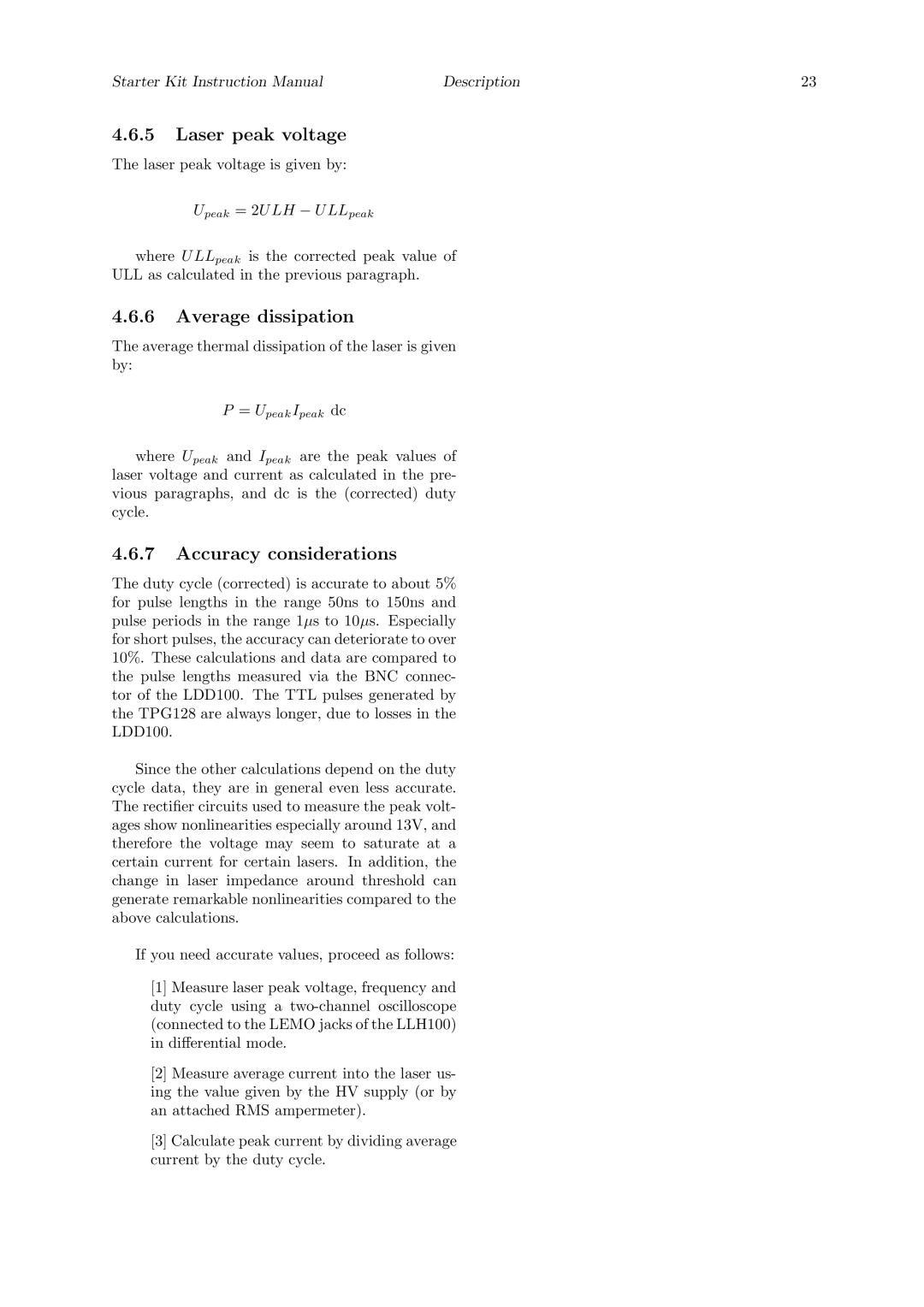Starter Kit Instruction Manual | Description | 23 |
4.6.5Laser peak voltage
The laser peak voltage is given by:
Upeak = 2U LH − U LLpeak
where U LLpeak is the corrected peak value of ULL as calculated in the previous paragraph.
4.6.6Average dissipation
The average thermal dissipation of the laser is given by:
P= Upeak Ipeak dc
where Upeak and Ipeak are the peak values of laser voltage and current as calculated in the pre- vious paragraphs, and dc is the (corrected) duty cycle.
4.6.7Accuracy considerations
The duty cycle (corrected) is accurate to about 5% for pulse lengths in the range 50ns to 150ns and pulse periods in the range 1µs to 10µs. Especially for short pulses, the accuracy can deteriorate to over 10%. These calculations and data are compared to the pulse lengths measured via the BNC connec- tor of the LDD100. The TTL pulses generated by the TPG128 are always longer, due to losses in the LDD100.
Since the other calculations depend on the duty cycle data, they are in general even less accurate. The rectifier circuits used to measure the peak volt- ages show nonlinearities especially around 13V, and therefore the voltage may seem to saturate at a certain current for certain lasers. In addition, the change in laser impedance around threshold can generate remarkable nonlinearities compared to the above calculations.
If you need accurate values, proceed as follows:
[1]Measure laser peak voltage, frequency and duty cycle using a
[2]Measure average current into the laser us- ing the value given by the HV supply (or by an attached RMS ampermeter).
[3]Calculate peak current by dividing average current by the duty cycle.
